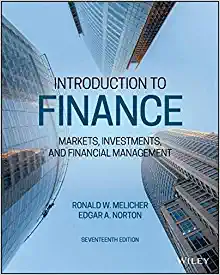Question
Marcus Fenix is evaluating an investment that will provide the following returns at the end of each of the following years: year 1, $12,500; year
Marcus Fenix is evaluating an investment that will provide the following returns at the end of each of the following years: year 1, $12,500; year 2, $10,000; year 3, $7,500; year 4, $5,000; year 5, $2,500; year 6, $0; and year 7, $15,000. Marcus believes that he should earn an annual rate of 8 percent on this investment. How much should he pay for this investment?
SIMILAR QUESTION + ANSWER
Walt is evaluating an investment that will provide the following returns at the end of each of the following years: year 1, $12,500; year 2, $10,000; year 3, $7,500; year 4, $5,000; year 5, $2,500; year 6, $0; and year 7, $12,500. Walt believes that he should earn an annual rate of 8 percent on this investment. How much should he pay for this investment?
CF0 = 0; C01 = 12500; F01 = 1; C02 = 10000; F02 = 1; C03 = 7500; F03 = 1; C04 = 5000; F04 = 1; C05 = 2500; F05 = 1; C06 = 0; F06 = 1; C07 = 12500; F07 = 1; CPT NPV(I = 8%) = $38,771.44
Step by Step Solution
There are 3 Steps involved in it
Step: 1

Get Instant Access to Expert-Tailored Solutions
See step-by-step solutions with expert insights and AI powered tools for academic success
Step: 2

Step: 3

Ace Your Homework with AI
Get the answers you need in no time with our AI-driven, step-by-step assistance
Get Started


